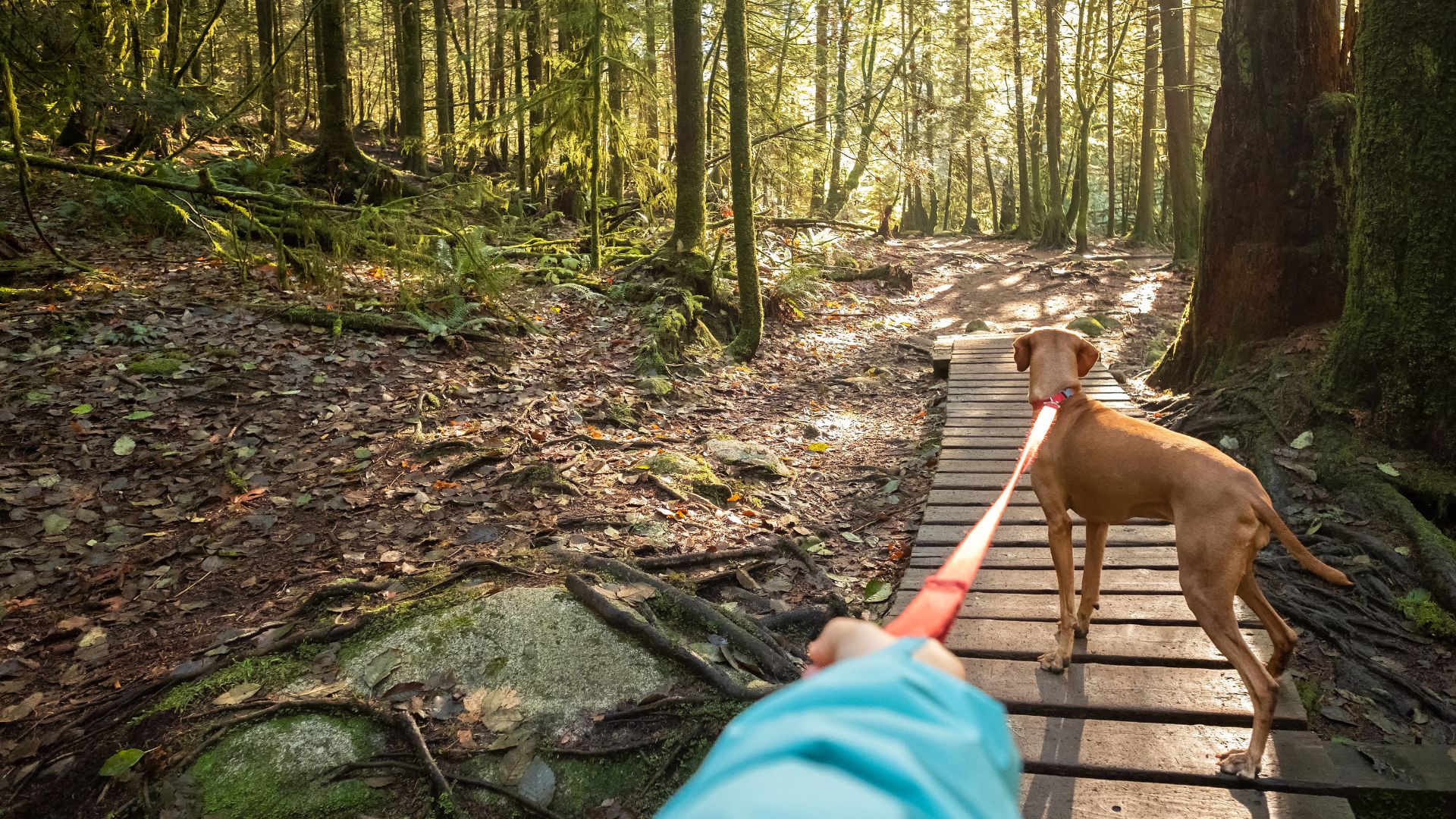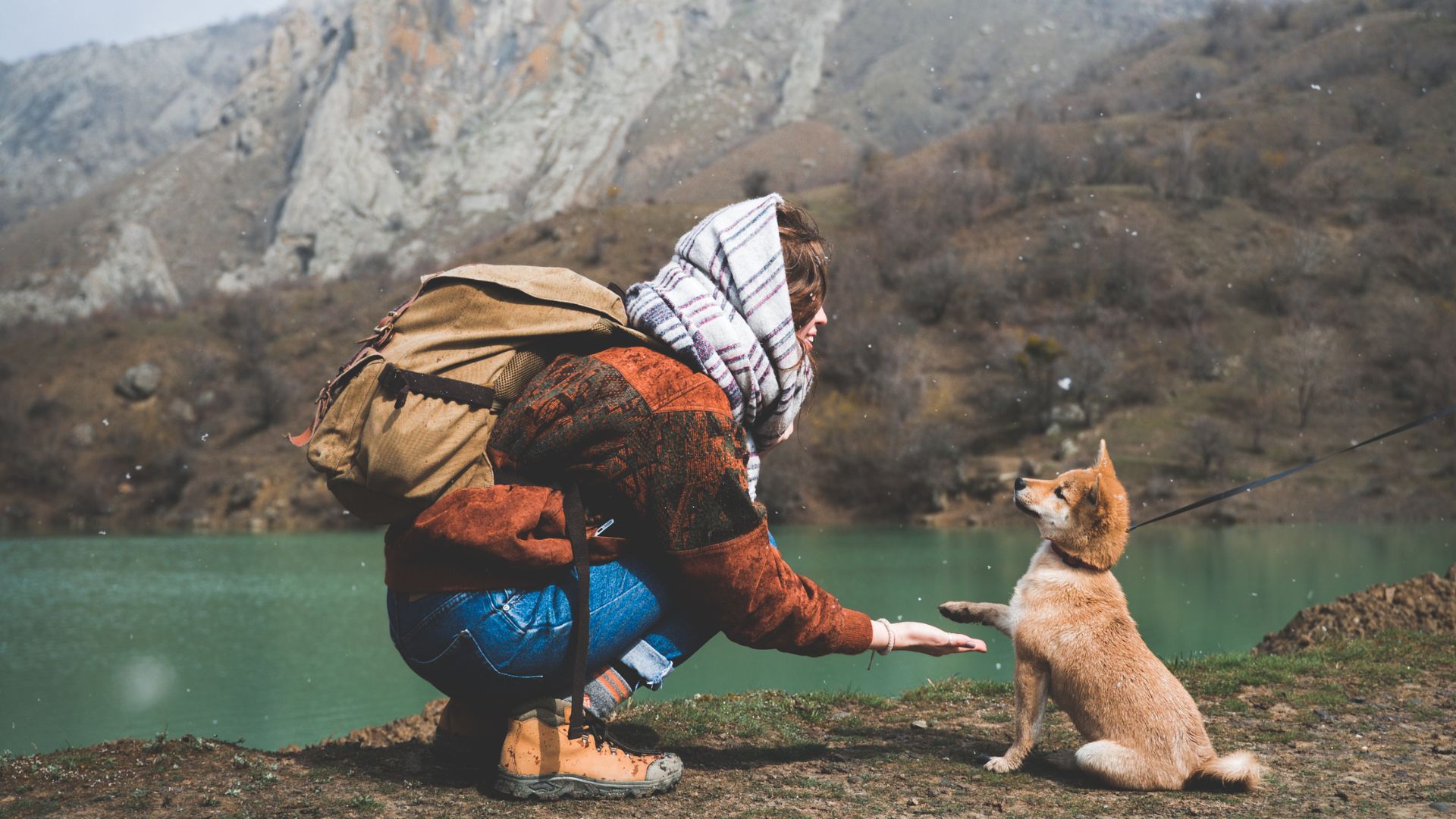Leash Training for Your Next Hiking Adventure
Proper leash training for hikes is a valuable tool for any Colorado Springs dog owner who wants to safely explore our region’s spectacular trail systems with their furry companion. With over 150 miles of scenic trails within the city limits, Colorado Springs offers some of the most dog-friendly hiking opportunities in the country. But before you hit the trails, you need to ensure your dog is leash-trained correctly so you can safely enjoy and respect our shared natural spaces.
At Dog Training Laurie’s Way, we specialize in developing personalized in-home training plans that address hiking challenges for Colorado Springs families. Our approach focuses on building trail-specific skills in your home environment first, where we can identify and address the root causes of leash issues that commonly emerge on our local trails.
Everyday Leash Challenges Colorado Springs Dog Owners Face on Trails
The most common issue we encounter with clients is reactivity to wildlife. Your dog’s sudden pull toward a squirrel or deer can cause you to lose your footing on our rocky trails, resulting in injuries for both you and your pet. Additionally, trail-specific behaviors like inappropriate greeting of other hikers or difficulty navigating narrow paths require specialized training approaches.
Unlike typical neighborhood walking scenarios, leash training for hikes introduces unpredictable elements that generic training doesn’t cover. Many local trainers focus on basic obedience in controlled environments, but fail to prepare dogs for the real-world challenges of Colorado’s wilderness.
Step-by-Step: Leash Training for Hikes Around Colorado Springs
Getting your dog ready for our local trails requires a progressive training approach:
Practice Trail Attention
Begin by practicing “Trail Attention” in your home and yard. Have your dog make eye contact before moving forward, teaching them that connection precedes movement. Practice this for about 10 minutes a day, gradually increasing the duration of eye contact before rewarding. Simple exercises establish a pattern that will transfer to the trail, where maintaining attention amid distractions becomes vital.
Introduce Distractions
Once this foundation is solid, gradually introduce controlled distractions that simulate trail encounters. If your dog reacts strongly to wildlife, we might incorporate deer scent or recordings of bird calls during training sessions. For dogs that become overly excited by other hikers, we practice passing family members on narrow pathways in your home or yard. Slowly introducing distractions helps build resilience to the triggers your dog will encounter on the trails.
Hit the Trails
Next, transition to low-difficulty trails like the paved Pikes Peak Greenway or Cottonwood Creek Park before attempting something like Section 16. Gradual progression builds your dog’s confidence and strengthens your communication system in increasingly complex environments.

Local Trail Progression: Where to Practice Leash Training for Hikes
When leash training for hikes, we recommend starting with Monument Valley Park’s wide, relatively flat paths where distractions are present but manageable. The paved sections provide a stable surface for focusing on leash mechanics, while occasional wildlife and other dogs offer moderate challenges. Spend at least three successful outings here before advancing to more difficult environments to build confidence for both you and your dog.
Once those skills are solid, progress to Ute Valley Park’s eastern trails. The moderate inclines and occasional narrow passages provide excellent opportunities to practice trail attention on uneven terrain. The variety of environments within this single park makes it ideal for building resilience and adaptability in your dog’s trail behavior.
For the ultimate test of your training, the Palmer Park central trails combine technical terrain, abundant wildlife, and frequent encounters with other dogs and hikers. The Templeton Trail loop can offer you the ultimate challenge: steep sections, rocky terrain, wildlife scents, and other trail users, making it perfect for solidifying advanced skills.
Related: Best Dog Parks in Colorado Springs to Practice Your Pup’s New Training Skills
Beyond Basic Leash Skills: Trail Etiquette for Colorado Springs Dog Owners
Being a responsible dog owner on Colorado Springs trails goes beyond leash control to encompass broader trail etiquette that preserves these spaces for everyone. To help keep wilderness spaces dog-friendly, please follow these guidelines when leash training for hikes:
- Carry a dedicated waste backpack that attaches to your dog’s leash or harness.
- Always pack out waste, even on remote trails where you might think it doesn’t matter.
- Practice proper passing protocol when encountering other hikers, especially on narrow sections of popular trails.
- Use the “Trail Yield” position, where your dog moves to your outside leg, to create maximum space between your dog and passing hikers.
Unlike other trainers who focus solely on basic control, our training emphasizes the social aspects of trail hiking that are particularly valuable on heavily-trafficked Colorado Springs trails.
The Best Leash Equipment for Colorado Springs Hikers
Having the right equipment makes a tremendous difference when leash training for hikes. While many local pet stores will recommend retractable leashes for the “freedom” they provide, the lack of control and potential for rapid acceleration can be dangerous on our steep, narrow trails, where encounters with wildlife are common.
Instead, we recommend a 6-foot fixed-length leash made of durable materials. Specifically, we’ve found that biothane leashes offer superior performance on Colorado trails. They won’t absorb water when your dog decides to splash through a creek, they remain flexible even in winter temperatures, and they’re easy to clean after muddy spring hikes.
For the connection to your dog, we recommend front-attachment harnesses rather than collars or back-attachment designs. Front-attachment harnesses like the Balance Harness or Freedom Harness provide gentle guidance rather than restriction, allowing you to redirect your dog’s attention when they spot deer or become excited by other dogs.

Why Choose Dog Training Laurie’s Way for Trail Success
Unlike training programs that use a one-size-fits-all approach, our leash training for hikes is based on your specific goals, your dog’s temperament, and the particular trails you plan to explore. Our in-home training model allows us to observe and address the root causes of leash challenges, not just the symptoms. When we understand how your dog responds in their home environment, we can better predict and prepare for their reactions on the trail.
Our clients particularly value our ongoing support system that extends well beyond the initial in-home training sessions. As you progress to more challenging trails or encounter new situations, we remain available for guidance and adjustments. No other local training program offers this level of personalized, continuing support for the challenges of Colorado Springs trails.
Experience Personalized Leash Training for Hikes with Dog Training Laurie’s Way
Our leash training for hikes begins with an in-home consultation where we assess your dog’s current behavior, understand your specific hiking goals, and identify the particular challenges you’re facing on Colorado Springs trails. From there, we develop a customized training plan that progressively builds the skills needed for successful trail experiences throughout our region’s diverse environments.
Don’t let another hiking season pass with leash frustrations limiting your enjoyment of our beautiful region. Contact Dog Training Laurie’s Way today to schedule your initial consultation. Together, we’ll build a communication system that transforms your trail experiences and strengthens the bond between you and your canine family member.